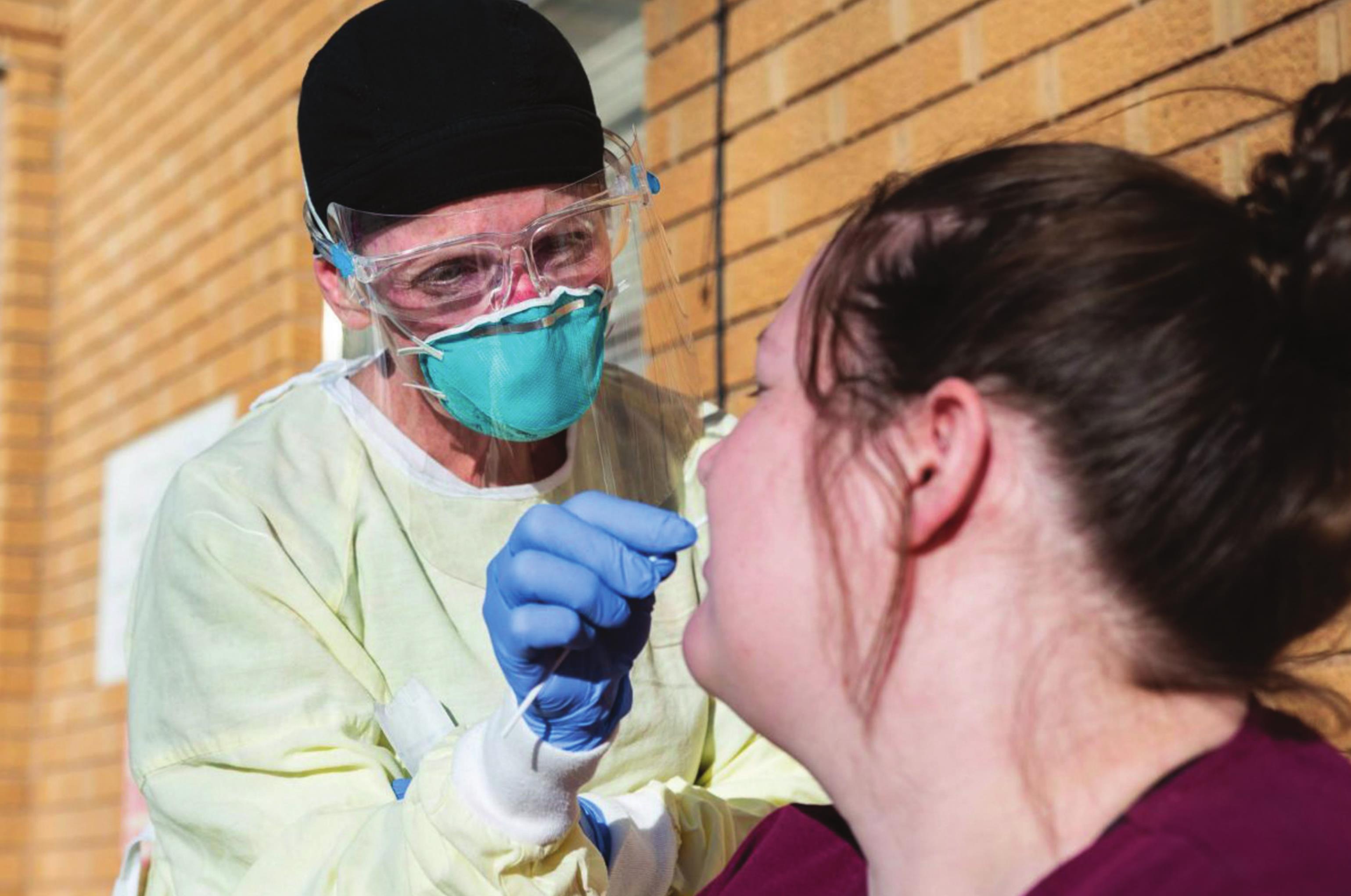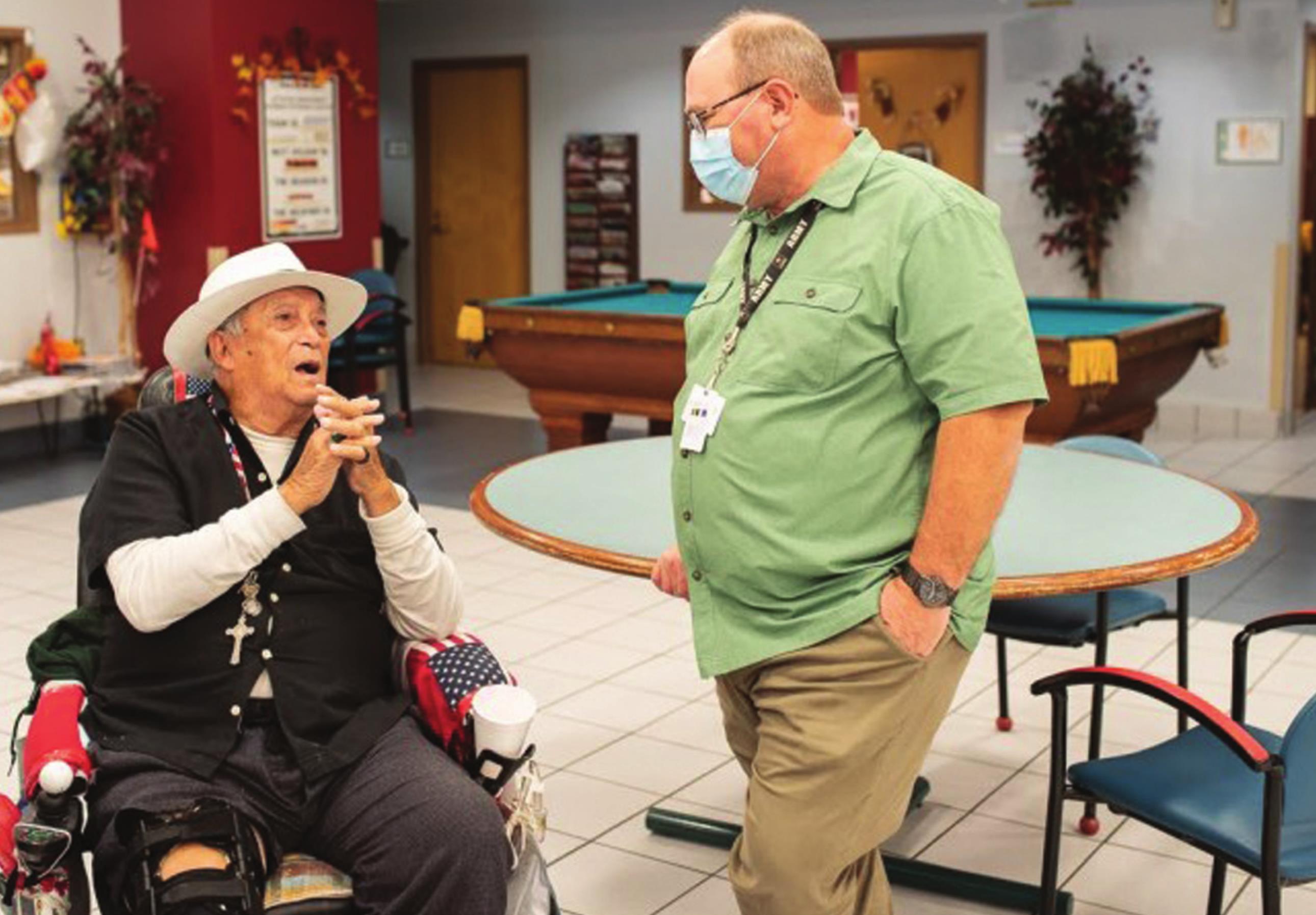At least one long-term care worker and 16 residents are casualties of Oklahoma’s largest COVID-19 spike since the pandemic began, Oklahoma Watch found in a review of the state health department’s weekly reports.
Like schools and workplaces across the state, facilities that care for Oklahoma’s elderly and disabled residents are facing new challenges as they battle the latest wave of COVID-19.
Seventeen facilities reported the death of one resident or staff from January 9-15, including the Oklahoma Veterans Center in Claremore which has 54 COVID-19 deaths since March 2020, the highest toll of any facility.
It can take weeks for the deaths of long-term care staff and residents to be reflected in the state’s reports because each case is confirmed by health department staff.
That is the largest increase in weekly reported deaths since May and follows seven weeks without any COVID-19 related deaths, reports show.
Infections are up, too, with 393 new cases reported among staff and residents statewide. Of those, 56 percent are staff.
Since March of 2020, 1,825 residents and 23 workers have died from COVID-19.
As she watches the numbers rise, Veronica Sutton said she worries about the safety of her father-in-law who lives in a retirement home in Stillwater. Sutton asked the facility not be named because she feared retaliation from staff or administrators.
There are no new cases reported at the facility in the most recent state report. But Sutton received a letter from the facility this past week that at least one staff member has tested positive and has witnessed symptoms among residents and staff during recent visits.
Wednesday, a worker told Sutton that tests are being conducted on everyone who is reporting symptoms, but Sutton worries that’s not enough.
“I can’t tell you how many residents I’ve heard coughing in there lately,” Sutton said. “It’s a disaster waiting to happen. I just hope they start taking it a bit more seriously now.”
Dayna Jordan, nursing director at Beadles Nursing Home in Alva, said memories from the photo library on her phone and from Facebook where she posted daily updates are reminders of the devastation the virus caused around this time last year.
A year ago, most of the residents were confined to their rooms or at least their wing of the century-old, family run facility in northwest Oklahoma. Weekly bingo and group dining were canceled. Visits with family took place outside with a plexiglass wall between masked loved ones. Most residents and a few staff had just received their first dose of the vaccine.
The number of infections is higher now than it was last year, Jordan said. But the impact is less severe.
As of last Thursday afternoon, only staff are infected, Jordan said. A few residents are being tested daily after being exposed by a visitor or worker, but so far none are positive. All of the facility’s residents are vaccinated.
Twelve workers, including five nurses, are out sick. Jordan said most believe they contracted it from their kids, who got it at school. Unlike some districts which have switched temporarily to remote learning, Alva schools remain in-person.
Two unvaccinated staff are the sickest, Jordan said, including one who has had symptoms for 13 days. Staff who received the booster shot are the least sick reporting only light sniffles and occasional headaches, she said.
And unlike last year when one resident said he would rather take his chances with COVID-19 than to be locked in his room at Christmas, resident routines have been only slightly affected.
“We’re still doing visitations and open dining so they can be together. They just have to wear masks,” Jordan said. “We didn’t want to put them through that again.”
Other nursing homes, veteran centers, assisted living centers and homes for people with disabilities also are experiencing mild cases so far, Steven Buck, president of Care Providers Oklahoma said, which represents the for-profit nursing home industry.
But the latest spike isn’t without challenges.
The biggest struggle he’s hearing from administrators is the speed of exposure with the current surge, which is assumed to be omicron though variants are not always tested.
“During Delta or even the original phases of COVID-19, if a building had one case then the next day they’d have two. And then four. There was time to quarantine,” Buck said. “With omicron facilities are virus free and the next day they have 13 positives.”
Federal and state mandates requiring facilities to allow visitation mean, even if an outbreak occurs, residents cannot be shut off from their loved ones outside. They can change visitation standards to help mitigate the spread and limit where visitors are allowed to go inside of the facility, but they can’t close their doors completely.
If Oklahoma follows trends in other states, long-term care facilities could see a plateau in cases next month just in time to turn their attention to a presidential vaccine mandate, which was upheld by the U.S. Supreme Court.
The mandate requires all nursing home employees to be vaccinated. The mandate only applies to facilities that receive Medicare and Medicaid funding, which means some long-term care workers, like those at assisted living facilities, are exempt.
Vaccination rates continue to go up.
According to a January 2 report from the Centers for Disease Control, 68 percent of Oklahoma’s long-term care workers are fully vaccinated. That’s up from 49 percent in August.
Nationally, 80 percent of staff are vaccinated, according to the report.



